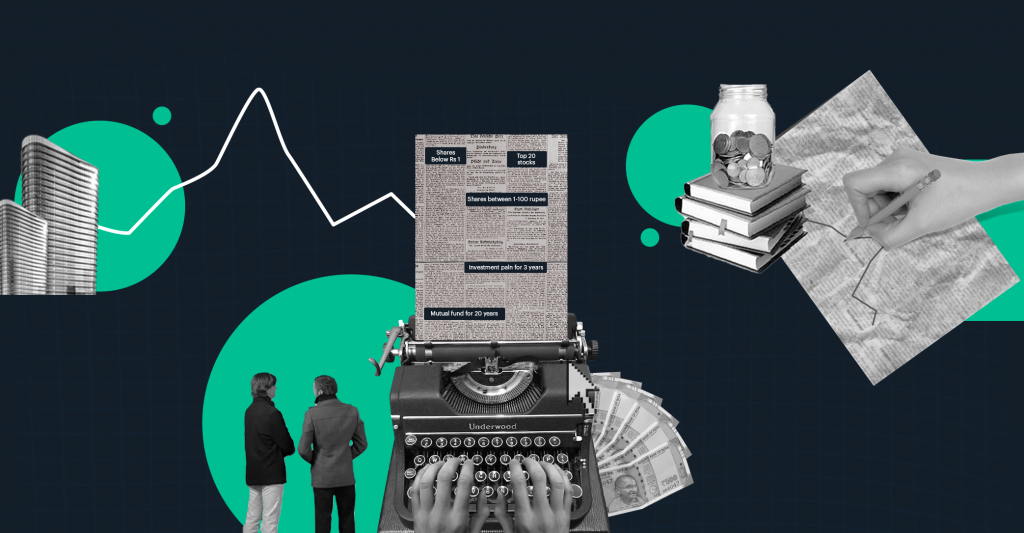Last Updated on Feb 10, 2022 by Ayushi Mishra
Your locker is surely not the most suitable place to hold your funds. Why so? Because the purchasing power of money goes on fading as inflation rises. Notice how you could earlier buy a bar of chocolate for all your 5 friends with Rs 10, and now, it costs Rs 10 for 1 bar? This is inflation and the decreasing time value of money. This is also why investing as a concept is so important for everyone. What you imagine to be your cost of living during post-retirement based on prices of today, will definitely not remain so when you eventually get there because of inflation. It’s best if you resort to investments for creating sustainable wealth with your idle cash.
That said, retirement is very far out. But when you think about it, cost rise is not a one-time affair- it is a gradual increase over time. So, why wait for inflation to spike? Start investing at the earliest to take advantage of the compounding power of money.
Traditionally, a 5-year investment plan is the most sought after because it rules out the fluctuations and instabilities in the shorter run. However, your funds get blocked for that period; and affects your liquidity in the nearer term. That’s where 3-year investment plans come in handy. Invest your funds in the best 3-year investment plan that ensures both high returns and lower risks.
This article covers:
- Best 3-year investment plans for high returns
- What benefits do we get with investing in 3-year investment plans?
- Tax implications on 3-year investment plan in India
Table of Contents
Best 3-year investment plans for high returns
A savings account yields lower returns in exchange for higher safety of funds. While interest rate has touched even 9% in the past, of late, rate of interest on savings bank accounts are seen diminishing to an abysmal 2-3.5% which is not enough to beat the inflation rate. Given below are some investment avenues you can explore:
| S No | Financial instrument | Expected returns |
| 1 | Liquid funds | 7-9% |
| 2 | Short-term and ultra short-term funds | 6-9% |
| 3 | Equity Linked Savings Scheme | 12-15% |
| 4 | Fixed deposits | 3-5% |
| 5 | Treasury bills | Variable |
| 6 | Gold | 12-15% |
Note: The gold return is the average of the last five years.
1. Liquid funds
Liquid funds offer liquidity, i.e., easy access to your funds. Liquid funds are debt funds that invest in fixed-interest, short-term financial instruments ranging from corporate bonds to government securities. It’s best suited for the risk-averse – those looking for modest returns coupled with the safety of the investment.
2. Short-term and ultra short-term funds
These are relatively stable investments as they invest in fixed income generating instruments. Short-term funds and ultra short-term funds are debt mutual funds that invest in the debt market products and shield your portfolio against market fluctuations.
3. Equity Linked Savings Scheme
ELSS are tax-saving mutual funds that give investors a dual-advantage of tax saving under Section 80C. An ELSS scheme invests a minimum of 80% of the total assets in equity and comes with a lock-in period of 3 years. Upon maturity, an ELSS you can sell or redeem your investment as per your needs.
4. Fixed deposits
There are a lot of perks you get with a fixed deposit. The returns are better than that offered by bank savings accounts; you get the benefits of compounding, hassle-free renewals, and much more. Though you can withdraw prematurely from an FD but a penalty may be attached to the same. You can also secure a loan against your FD to meet liquidity requirements at your end.
The present returns offered by FDs at 4-5% are not that encouraging; but it is still a safe option with consistent returns.
5. Treasury bills
The fact that the Reserve Bank of India is the nodal authority that offers treasury bills, is more than sufficient to vouch for the safety of the financial instrument. The government issues treasury bills with a maturity period of 91 days, 182 days, or 364 days to fulfill its financial needs. In exchange, it offers risk-free returns to investors.
6. Gold
The prices of gold have an inverse relationship with equity as an asset class. Investors tend to hold gold in their portfolio not only as a cover for their market investments, but also a hedge against inflation.
Gold can be quickly liquidated in case of emergencies. You have three options to invest in gold:
- Buy physical gold (jewellery, coins or biscuits)
- Invest in Gold Exchange Traded funds (ETFs)
- Buy tax-free Sovereign Gold Bonds (SGBs). This investment option however has a maturity of eight years.
What benefits do we get with investing in 3-year investment plans?
When you invest in a 3-year investment plan, you aim to provide for your short-term financial goals. It would be best if you plan your investment in a way that by the time you near your short-term financial goals, you have enough monetary resources to pursue them.
The benefits include, but is not limited to:
- Liquidity: Most of the plans we discussed above offer seamless redemption opportunities to the investors. They can be quickly converted to cash. Therefore, you can avail liquidity of invested money in case of any emergency without waiting for the completion of the maturity period.
- Optimal returns: Short term investments are generally safe in debt, and instruments like FDs, savings accounts or treasury bills are as safe as they can get. They guarantee a fixed return without exposing your principal amount invested to unforeseen market risks.
- Diversification: “More the Diversification in investment, the less will be the risk involved.” You have the luxury to make portions of your amount to be invested, and spread them in different 3-years investment plans depending upon your risk appetite and risk class of the instrument.
Tax implications on 3-year investment plans
Taxes on income are inevitable. Different plans have their respective tax incidences, like:
- Capital gains from mutual funds are subject to taxation. It is taxed as either long-term or short-term capital gains.
- Selling of physical gold is subject to 20% tax coupled with a cess of 4%.
- Income from FD is subject to TDS when exceeding Rs 40,000 (Rs 50,000 in the case of senior citizens).
- Interest earned on savings accounts beyond Rs 10,000 in a year is taxable under the head – income from other sources.
Disclaimer: Please consult your tax advisor before making any decisions.
While investing in 3-year investment plans, investors are always troubled whether to compromise on returns to avail safety of funds. Investing in tax-friendly investment options like ELSS fetch additional tax benefits within the shortest lock-in period of 3 years. Consider your risk profile before making your investment choices.
- How To Declare Mutual Funds in ITR & Disclose Capital Gains in India? - Jun 6, 2025
- How To Sell or Exit Your Mutual Funds in India? - Jun 6, 2025
- Fund of Funds (FOF): Meaning, Types & Advantages - May 13, 2025





